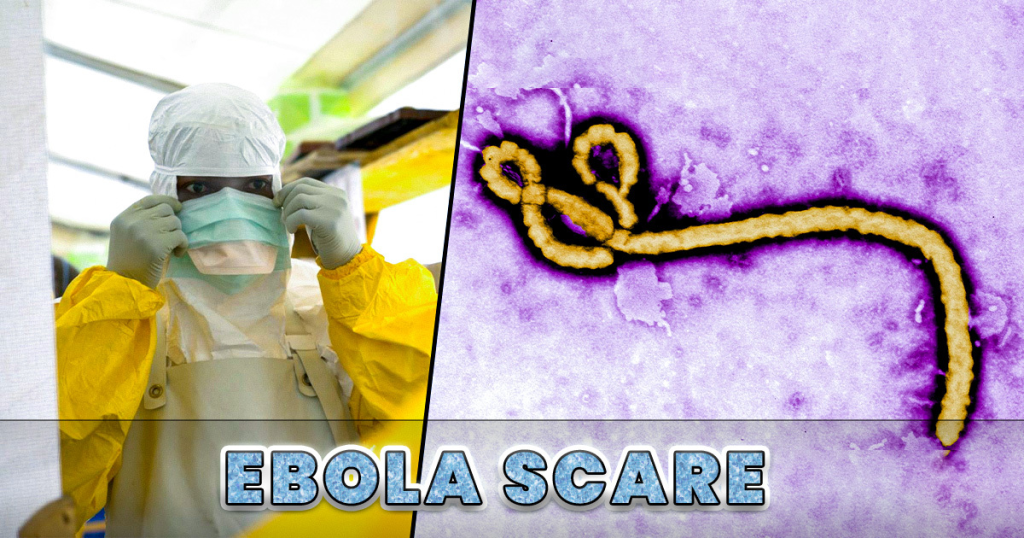
In This Article
- Ebola False Alarm in NYC Urgent Care
- Why is Ebola Virus Dangerous?
- What Should You Know About Norovirus?
- How Technology have Helped to deal with the Situation?
On February 16, 2025, the urgent care facility in Manhattan, New York, faced a dramatic incident when two patients rushed towards the emergency room and were suspected to be the prey of the Ebola virus. As a result, they got the full hazmat response from the emergency health workers, and this raised the alarming situation as the Ebola virus has a deadly nature.
Further investigation on the patients and the treatment had revealed that the case was not of the Ebola virus but was norovirus. The situation was not relaxing even after the confirmation because norovirus is highly contagious and a dangerous gastrointestinal illness.
Ebola False Alarm in NYC Urgent Care
Immediately after the reporting of patients, they were transported from a CityMD on East 125th Street and Lexington Avenue by first responders (like the firefighters or the paramedics), and all of them were wearing hazmat suits. We know that these are specialized protective clothes and are used in alarming situations where the chances of getting the disease or being caught by the natural disasters are high.
Just after they reached the hospitals, the investigation and treatment were started, and the main priority was to make the safety of the public and health workers. The thorough examination of testing and investigation has confirmed that the virus was not Ebola but the norovirus.
Why is Ebola Virus Dangerous?

The situation discussed above was dangerous because of the highly chronic nature and painful treatment process of the Ebola virus. It has a high mortality rate that was alarming to the whole area. According to different reports, the fatality rate of the Ebola virus is 25% to 90% depending on the availability of the treatment and the strain. Hence, it is one of the deadliest viruses around the world in terms of survival.
The Ebola virus has severe symptoms that may include vomiting, pain, diarrhea, bleeding, or, in some cases, organ failure. The patient may have a painful death in some days.
Using hazmat suits was compulsory in this case because this virus is transmitted through the direct fluid contact between the patients and others. These fluids may be saliva, blood, vomit, etc., so the healthcare unit has to be very careful and professional to deal with the case.
The incubation period for this virus ranges from 2 days to 21 days depending on the severity and the extent of the virus attack.
Although the experts are trying their best to provide the ultimate treatment for the Ebola virus, still, they are not sure if the treatment will work 100% or not.
Center for Disease Control (CDC) reports,
Ebola is spread through contact with the body fluids of an infected, sick, or dead person. Rarely, some people can get the disease from contact with an infected animal, like a bat or primate.
What Should You Know About Norovirus?
The dramatic confirmation for the norovirus on the patients is still bad news but is better than having the Ebola virus break out in New York. This is a gastrointestinal illness that is also referred to as the stomach flu. Stomach cramps, nausea, diarrhea, and vomiting are its most common symptoms. These symptoms do not appear immediately after contact but take 12 to 48 hours.

In case the patient does not even get the right treatment, the virus resolves on its own within 1 to 3 days. It can be spread through the contaminated water, food, or the surfaces and is transmitted via fecal-oral routes.
How Technology have Helped to deal with the Situation?
The diagnosis of situations like Ebola virus and norovirus is crucial and technology is playing its role to make the path smooth. One of the widely used techniques nowadays is artificial intelligence, which is helping with early and accurate diagnosis.
The outbreak prediction models, like BlueDot, are effective at diagnosing the spread of the Ebola virus and helping the healthcare workers to accordingly deal with the situations.
At Weborik Hub, we are helping the clients to integrate techniques like artificial intelligence into their businesses, apps, and websites so they may get the expected output.
About the news we are discussing, Dr. Michelle Morse, New York City Department of Health and Mental Hygiene Interim Commissioner of Health, has posted the tweet:
The two patients that sought services at CityMD on February 16 at 153 East 125th Street do not have Ebola. Neither patient had exposure to Ebola or other factors that would indicate risk. One patient is being taken to NYC Health + Hospitals/Bellevue for routine testing and treatment. The NYC Health Department is in close communication with FDNY, CityMD and NYC Health + Hospitals.
Overall, the spread of the Ebola virus in New York is a dangerous news, and two patients were considered suspicious about it, but the early diagnosis, care, and technology have confirmed that the virus is not Ebola and maybe norovirus is the reason for their illness.



